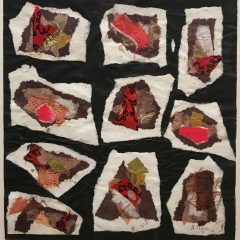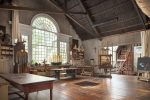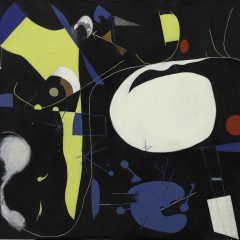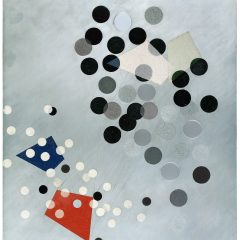This is the third and last of my Chicago posts. Here are the the first post and the second one.
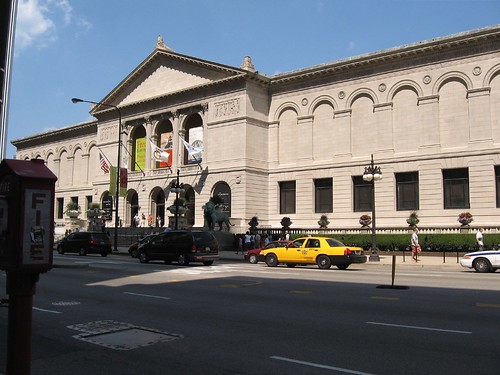
I suppose it’s silly to write a post that says the Art Institute of Chicago is a great museum. But that’s what I’m going to do. Here’s a picture of the Beaux Arts building that houses it, completed the year of the Chicago World’s Fair (1893).
And to think, if not for the beastly hot weather, I might have missed the place. But on our last day, we needed someplace to go that was indoors and cool.
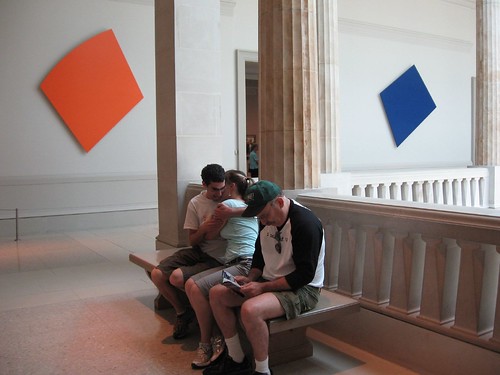
Ellsworth paintings surrounded the atrium.
It just so happens that the current special exhibit–the Jeff Wall retrospective–was one Roberta and I had seen at MoMA. So I saw it again. When we were done, we paused for a break in a lovely atrium that reminded me of the atrium at the Carnegie (similar style building, similar method of construction, I’d guess). The Ellsworth Kelly paintings lining the walls, in spite of their Pop colors and glistening materials, made me think of Richard Tuttle’s cloth pieces and wire pieces, with their imaginary projections in space.
But it’s the Impressionists and post that really make this museum a must-visit place. I mean, a whole room of Manet, a whole wall of his haystacks!! Or Seurat’s Grande Jatte!!
Kandinsky and Feininger (maybe the best of his I’ve ever seen) and Chagall and Klee, all in one room, popped with glorious gumdrop colors.
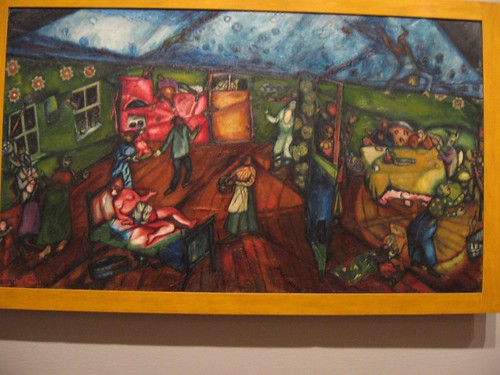
Marc Chagall, Birth, 1911/1913
This Chagall has none of the sentimentality that later success encouraged. It has lots to look at, and shows his sense of the supernatural in the everyday. The stained glass-like colors and lines are surprising in paint; so is the subject matter surprising. There’s something odd and improper going on here, with the interior spaces exposed and the mother exposed with half the town walking through the inside/outside.
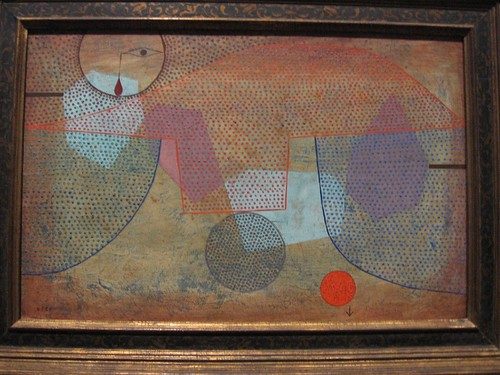
And all of the Klee pieces looked bright and pretty current to me. I began comparing him to Miro. I guess that’s kind of obvious, but for some reason, seeing all those Klees in a row brought it home to me.
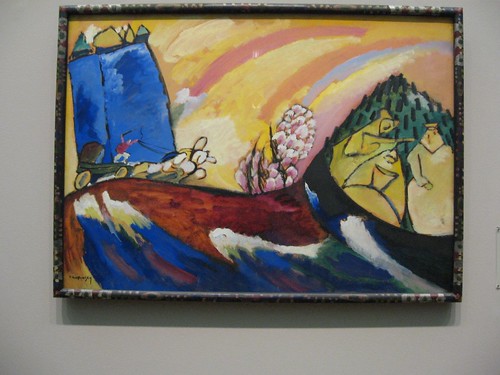
Vasily Kandinsky, Painting With Troika, 1911, oil on cardboard
The Kandinskys came from different stages in his work. So some of them looked like Kandinsky as we know him. But some of them looked Impressionist and Chagall-like. This modest one has bits of Klee-like imagery, bits of Chagall’s humanity and folkiness. In all of the Kandinskys, the colors were fabulous.
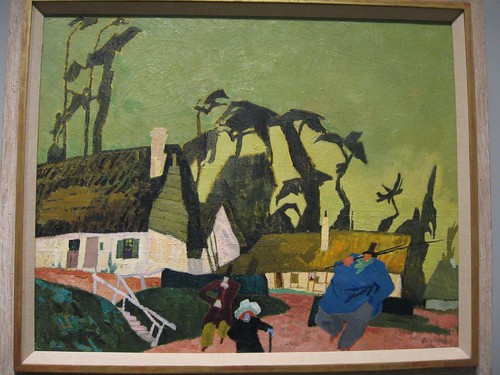
Lionel Feininger, Longeuil, Normandie, 1909
Even Lionel Feininger, less of a luminary, looked darned luminous and beautiful here. I loved his work when I was in college, and here I was, a fan all over again. I could see shades of Gauguin in his very French landscape.
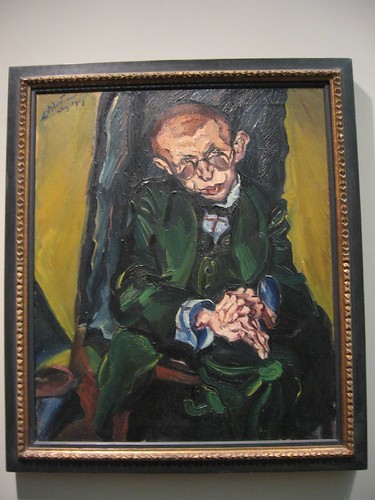
Ludwig Meidner’s portrait of Max Herrmann-Neisse, 1913
Ludwig Meidner, a German artist from the same period, seems to fill the gap between Haim Soutine and Alice Neel. I never even heard of him!
I do want to observe that some of the excellence of the colors may have something to do with the lighting here, which is so well done that paintings that might otherwise die rise magically off the walls.
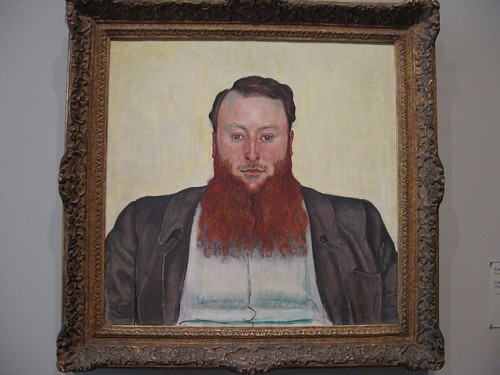
Ferdinand Hodler, James Vibert, sculptor, 1907, oil on canvas
A little past the Grande Jatte, I found this hilarious painting by Swiss artist Ferdinand Hodler (on the wall next to the scariest Hodler ever). It’s a remarkable image, between the hair obsession, the square obsession, the brush-stroke obsession, and the colors.
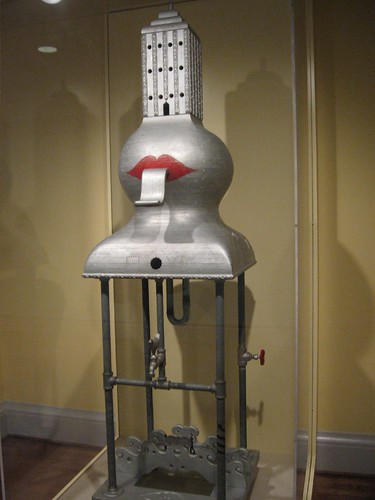
Angry Young Machine, by H.C. Westermann, 1960, wood and metal
Just before I left, down in the basement near the Ladies Room, I came upon this H.C. Westermann. To see the Chicago deco architecture merge with the witty plumbing was a nice end to the visit, especially since Westermann, who is a Chicago guy and studied at the AIC, is having a show at PAFA right now. More on that later.
Honestly, the AIC is worth a trip all on its own.


